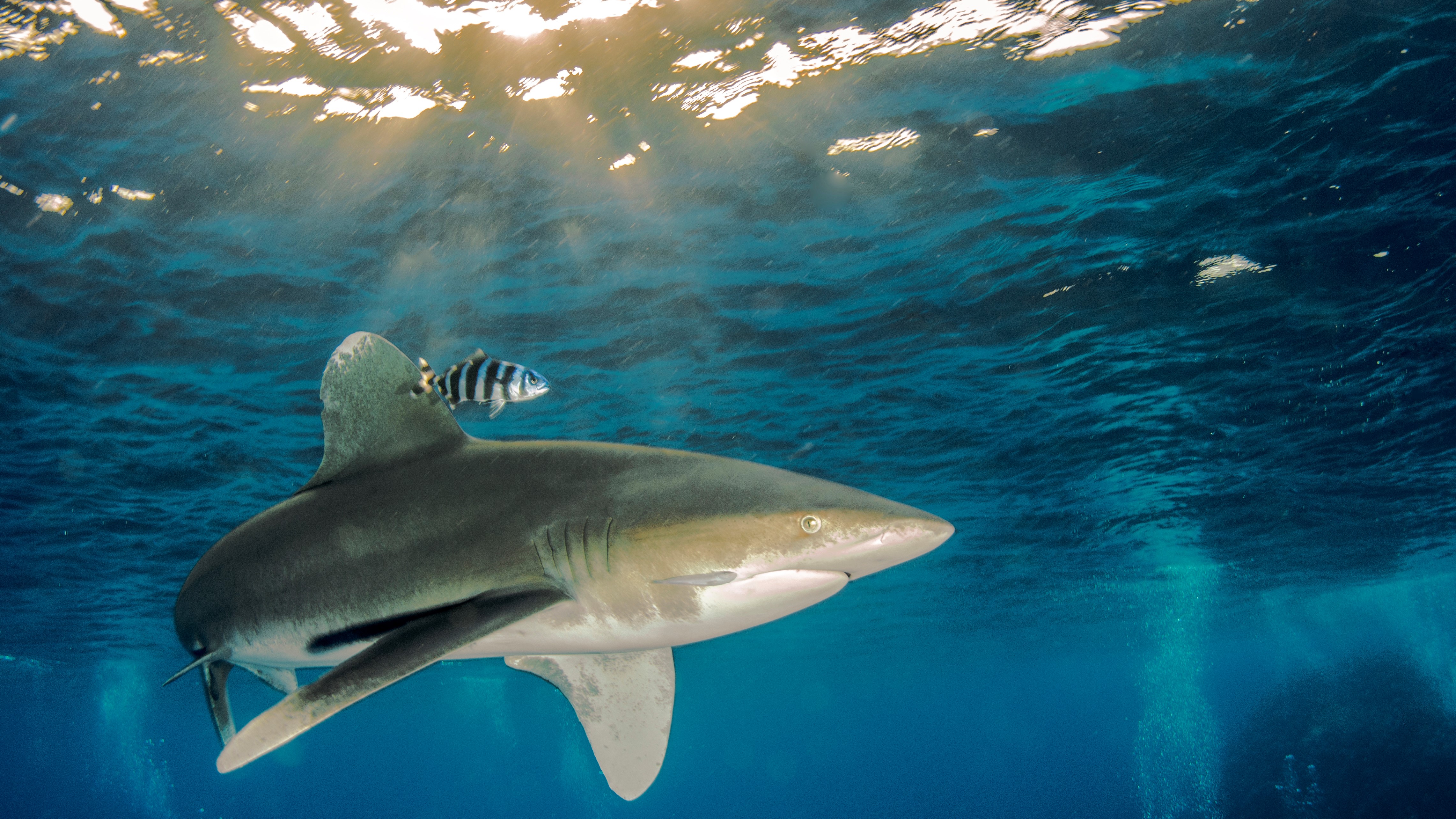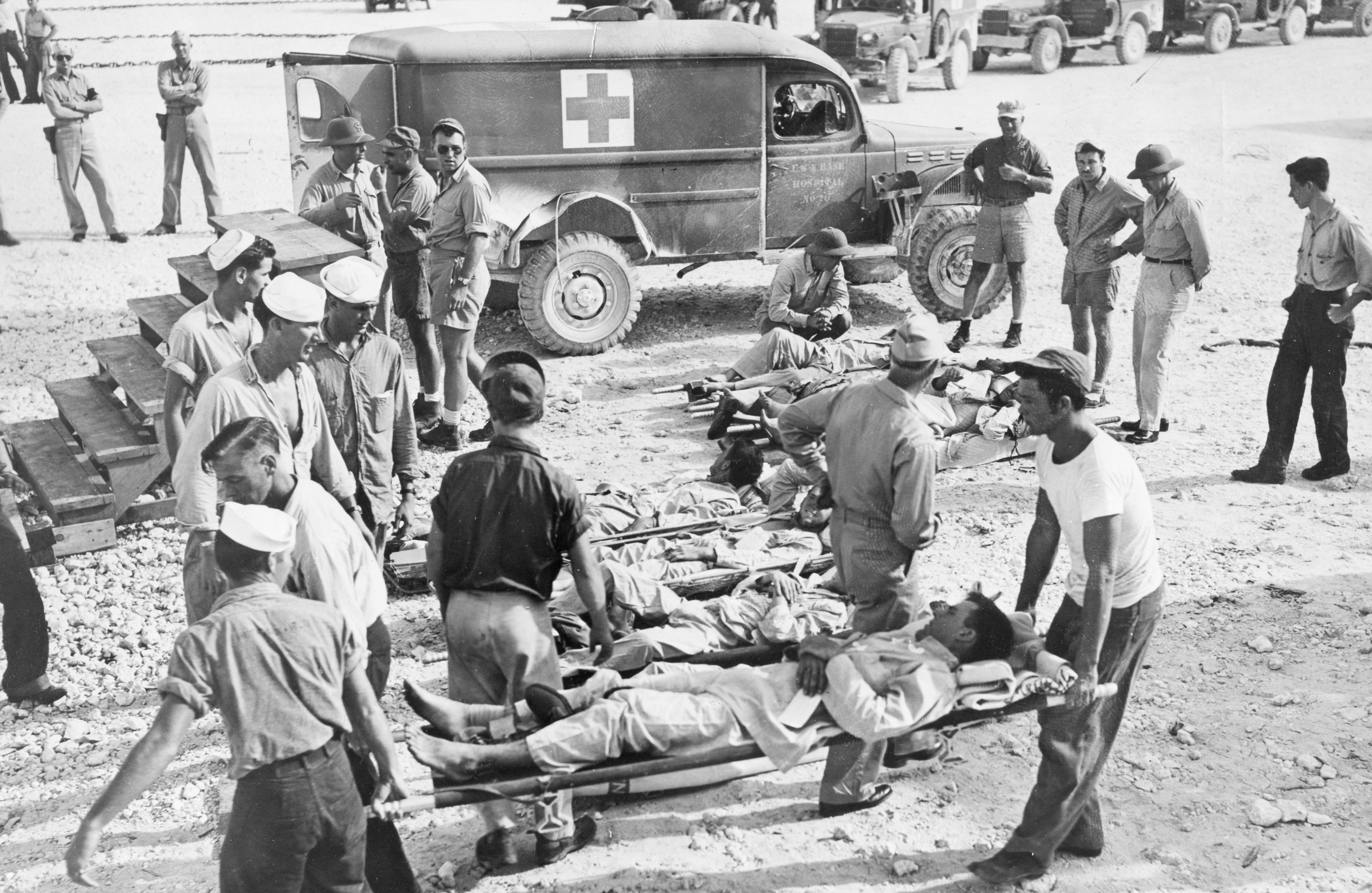What is the deadliest shark attack ever recorded?
During World War II, the sinking of a U.S. Navy ship led to one of the worst known shark attacks in history, with up to 150 killed in a feeding frenzy.

Shark attacks are extremely rare — you're unlikely to meet one in the flesh, let alone be bitten. But during World War II, the sinking of a U.S. Navy ship led to one of the most infamous shark attacks in history and the deaths of hundreds of men, with the explosion drawing in the apex predators and sparking a feeding frenzy that lasted for days.
In July 1945, the USS Indianapolis had completed a trip to a naval base on the Pacific island of Tinian to deliver uranium and other components that would be used to create the atomic bomb "Little Boy." The first nuclear weapon ever used in wartime, it would later be dropped on the Japanese city of Hiroshima.
After delivering the parts, the Indianapolis departed for the Philippines on training duty. Shortly after midnight on July 30, the ship was torpedoed by a Japanese submarine, causing massive damage. It began to take on huge amounts of water, and sank in just 12 minutes. Of the 1,195 men on board, around 300 went down with the ship, but nearly 900 were left adrift in the open ocean.
Many died of exposure, dehydration and saltwater poisoning. However, according to Smithsonian Magazine, up to 150 sailors and crew are estimated to have been killed by sharks — in what is considered the worst shark attack in history. But why?
Dangerous sharks and how they hunt
Unlike some other predators, such as lions and wolves, most sharks hunt alone, Nico Booyens, a marine biologist and director of research at the Shark Research Unit in South Africa, told Live Science in an email. "Different shark species have different hunting techniques, but many sharks are solitary predators that rely on their senses of sight, smell and electroreception to locate their prey."
Sharks also have a special system called a lateral line that picks up the vibrations in the water, Booyens says. This sensory ability would have allowed them to detect the movement of the men in the water as they thrashed around to stay afloat. Once the sharks had located the sailors, they stood little chance of survival — especially those who were injured.
Related: In rare attack, great white shark decapitates diver in Mexico. But why?
Get the world’s most fascinating discoveries delivered straight to your inbox.
According to survivor accounts, many victims were attacked near the surface of the water. This has since led to suggestions that oceanic whitetip sharks (Carcharhinus longimanus) were the involved in the attacks because they are a surface-dwelling species.
"When a shark has located its prey, it will often use its sharp teeth and powerful jaws to bite and tear chunks of flesh from the prey," Booyens added. "Some sharks, like the tiger shark [Galeocerdo cuvier], are known for their ability to swallow their prey whole, while others, like the bull shark [Carcharhinus leucas], will attack and bite their prey repeatedly until it is weakened or immobilized."
Although oceanic whitetips are at the top of the food chain, their meals can be few and far between, so they are often opportunistic feeders. According to the Florida Museum, the species is often the first to appear at the site of oceanic disasters, and was also a major cause of fatalities after the sinking of the RMS Nova Scotia in 1942. The species is known to be persistent, unpredictable and shows little fear, making it particularly dangerous to humans, the Florida Museum said.
The worst shark attack in history
At the USS Indianapolis, the bodies of the dead and the injured were picked off first. Survivor Corporal Edgar Harrell told the Indianapolis Star in 2014: "That first morning, we had sharks." As men got separated they would be targeted," he explained. "You hear a blood-curdling scream. And then the body would go under, and then that life vest popped back up."
The men were too scared to eat or move, for fear of being preyed upon. According to the report of a survivor, one of the sailors opened a can of Spam, the primary ration at the time, but was surrounded by sharks, resulting in a "feeding frenzy."
"Feeding frenzies typically occur when there is a sudden abundance of food, such as when a large school of fish is trapped in a small area," Booyens said. "The scent of blood and the thrashing of prey can trigger a feeding frenzy, causing sharks to swarm and compete for the available food."
Many species of shark may engage in frenzied hunting, during which they can become very aggressive and attack each other as well as the prey. However, oceanic whitetips’ opportunistic feeding behavior — as well as their size and strength — made them particularly dangerous for the sailors. "Feeding frenzies can be dangerous for humans who happen to be in the water, as the sharks may not be able to distinguish between prey and people," Booyens added.
For four days, no rescue arrived. Although the U.S. Navy had received word that a Japanese submarine had sunk a U.S. vessel, the message was believed to be fake — in an attempt to lure American rescue boats into a trap. Meanwhile, the survivors tried to stay alive by floating in groups, but in the scorching heat, many succumbed to dehydration. Others died from hypernatremia — too much sodium in the blood — from being forced to drink the salty seawater.
Eventually, a Navy plane flying overhead spotted the Indianapolis survivors and radioed for help. Food, water and rafts were dropped for the surviving men, before a seaplane was landed by Lt. Adrian Marks to rescue some of the survivors from the sharks. Finally, the USS Cecil J. Doyle helped to pull the remaining survivors from the water. Only 316 men survived.

Lydia Smith is a health and science journalist who works for U.K. and U.S. publications. She is studying for an MSc in psychology at the University of Glasgow and has an MA in English literature from King's College London.





